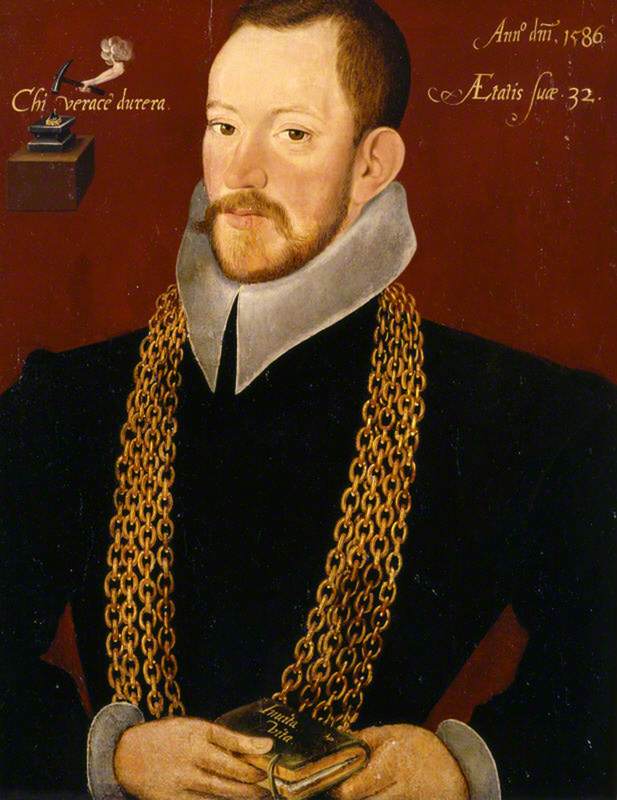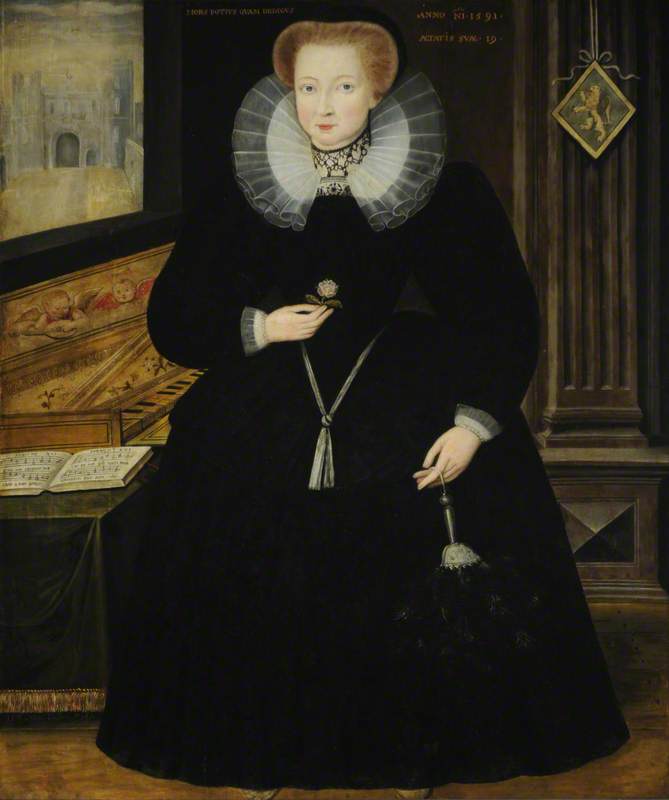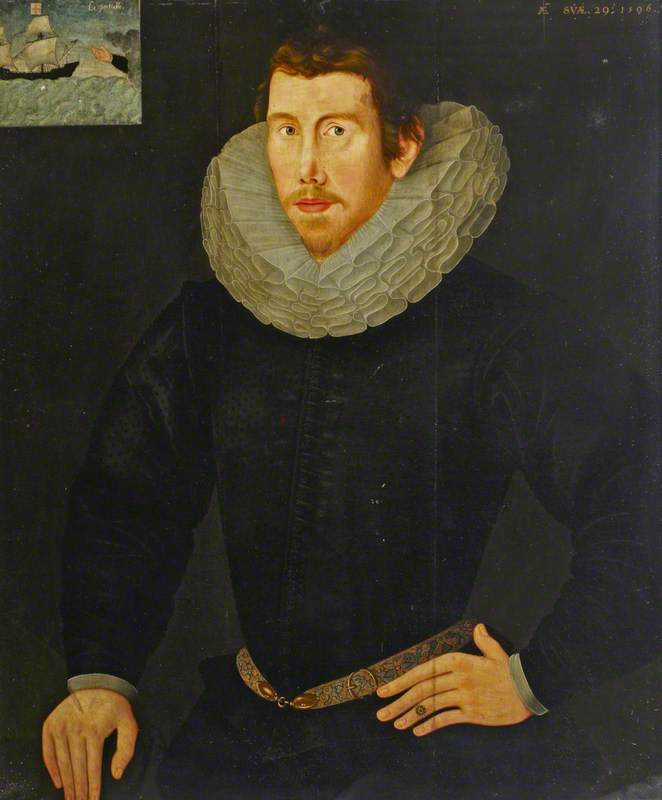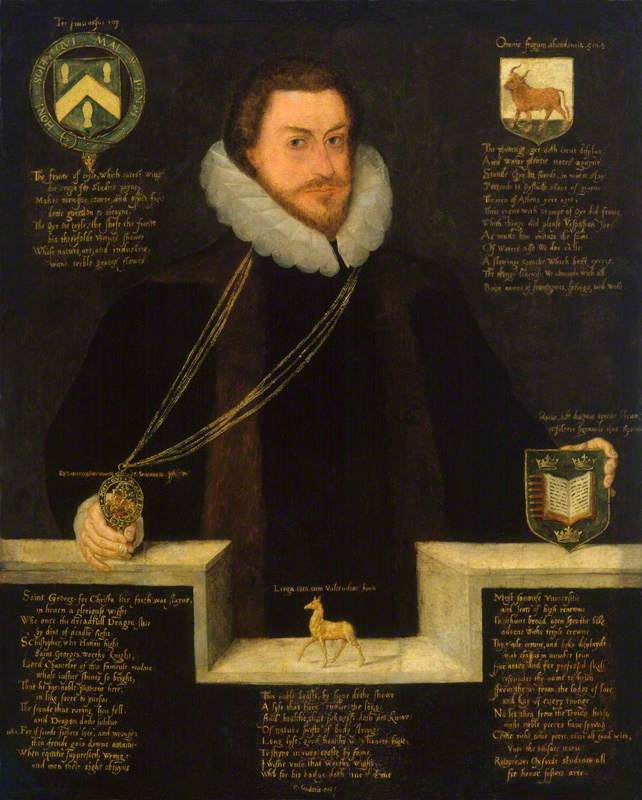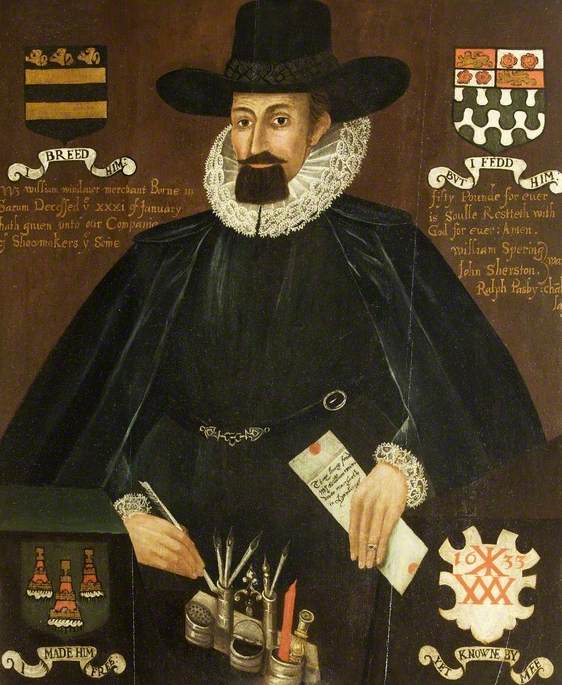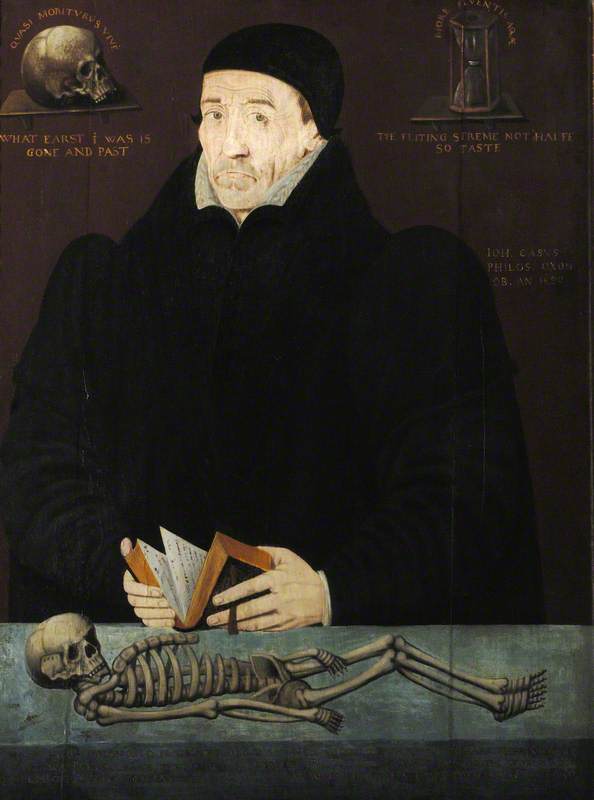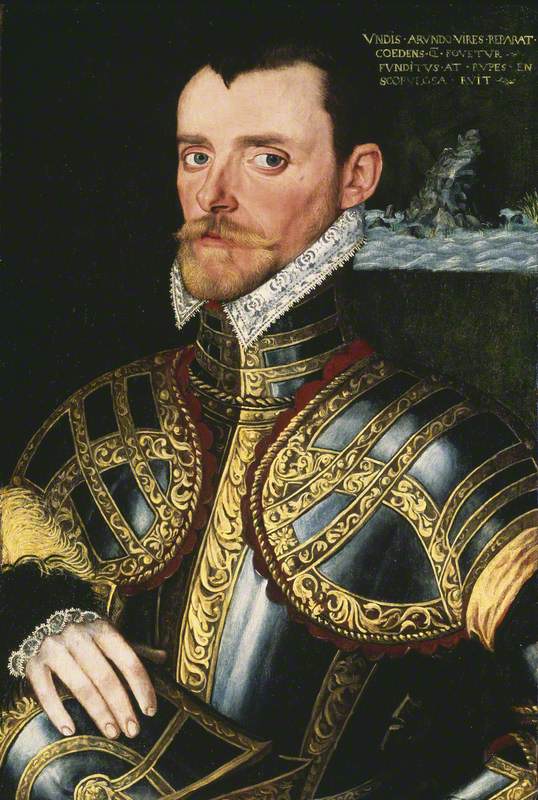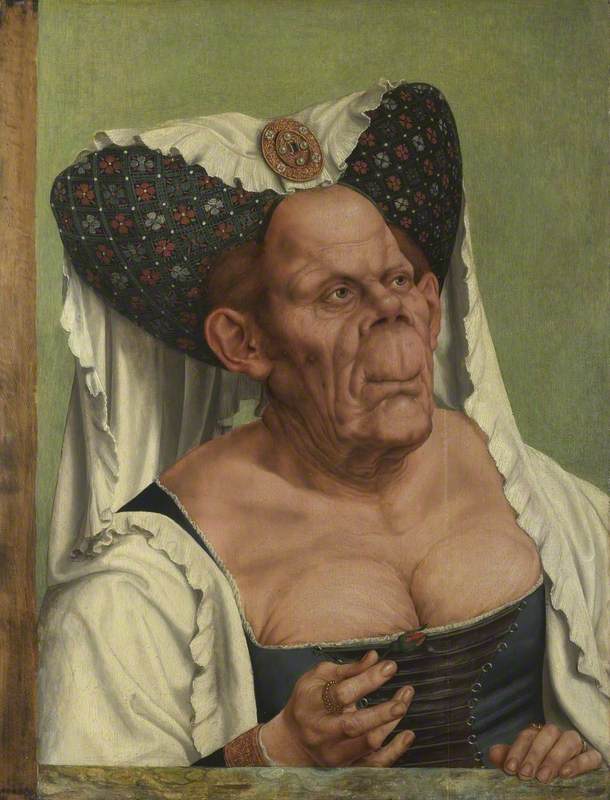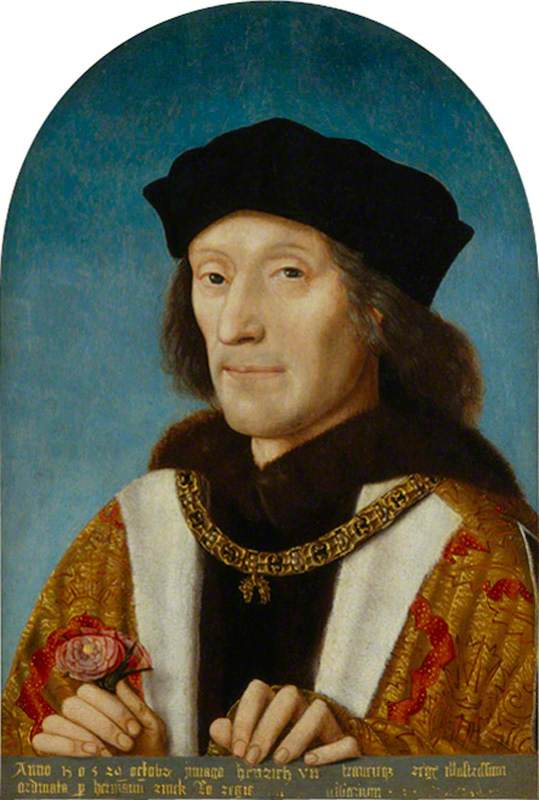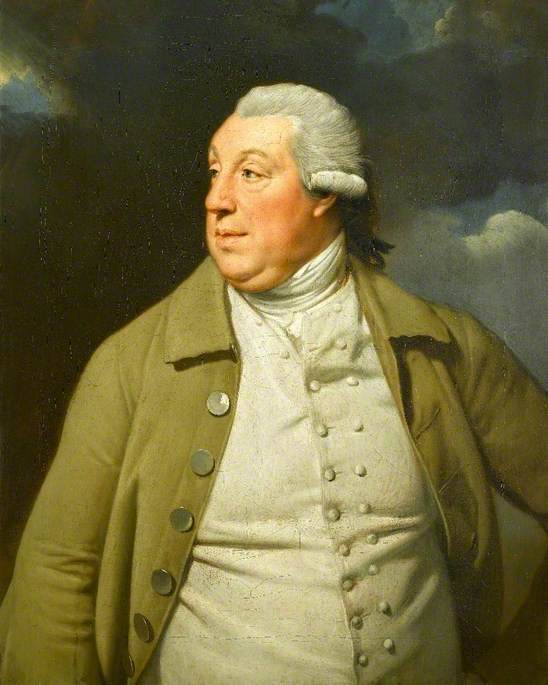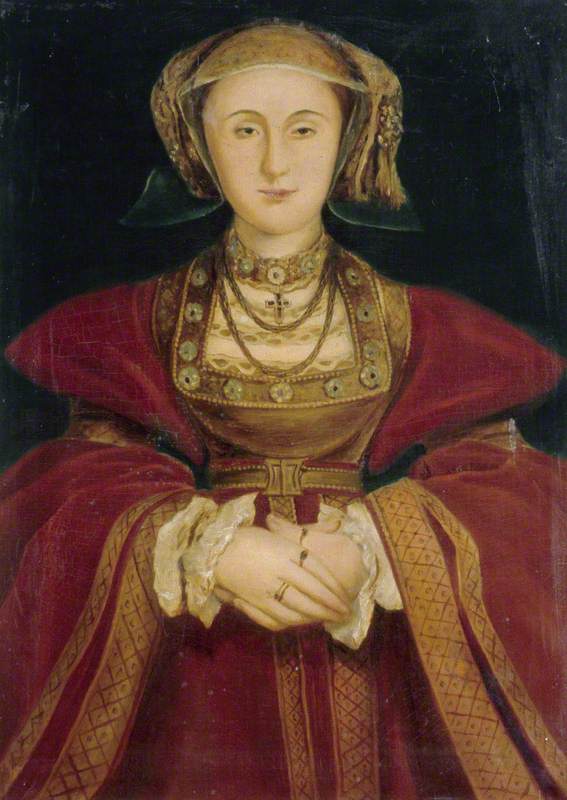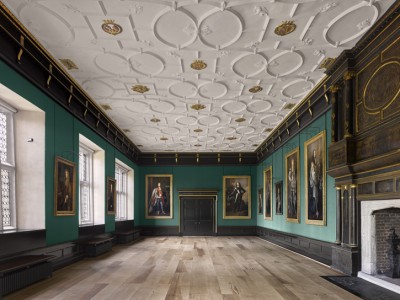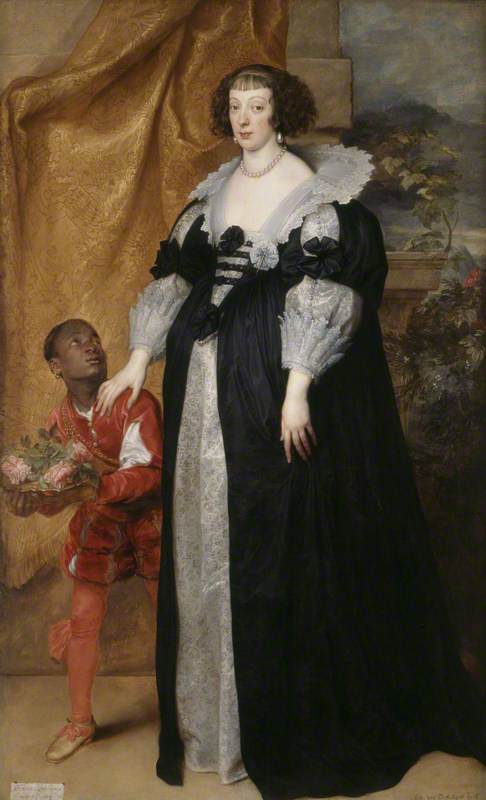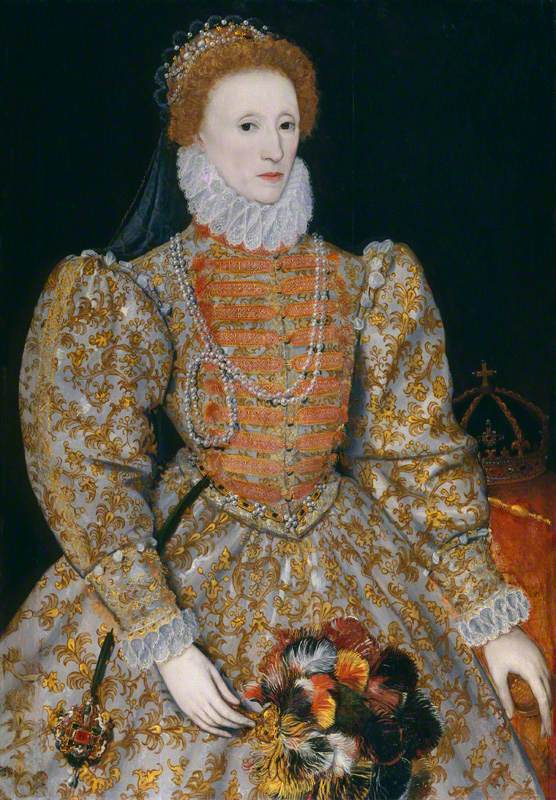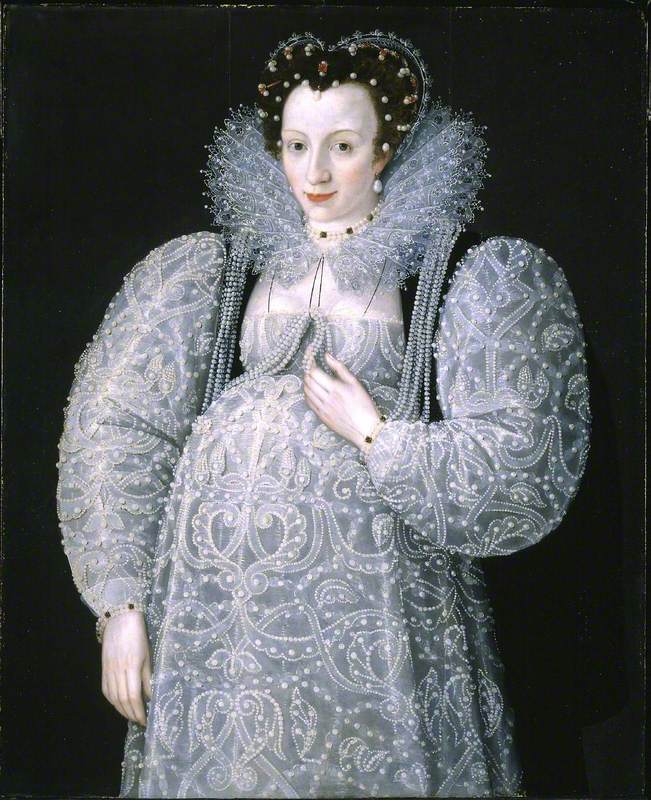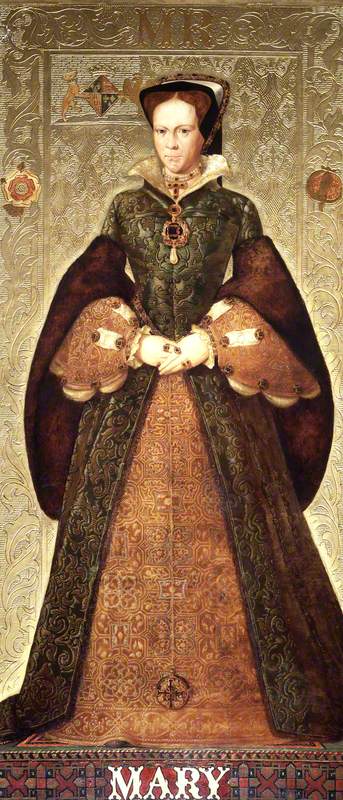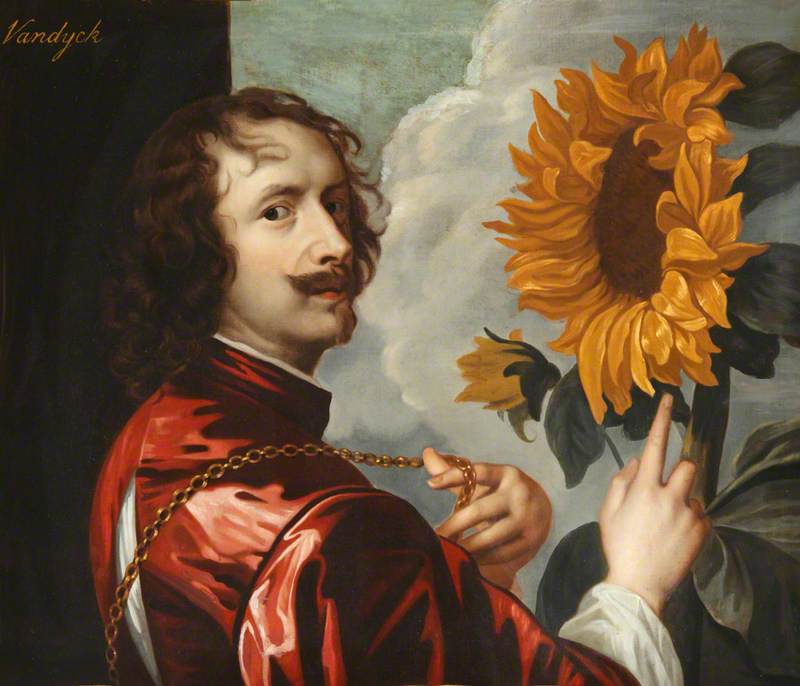Tudor and Jacobean viewers often described visual art as 'lively'. This word had various connotations but was particularly associated with vividness and realism in literary contexts. Although Tudor people didn't write much about art, they wrote a lot about writing, drawing on the framework of rhetoric: the art of effective communication, inherited from the classical world. Rhetoric formed the basis for much of the formal curriculum in the sixteenth and seventeenth centuries, from grammar schools upwards, and its principles also suffused the culture through more informal routes. Reconstructing the Tudor concept of 'liveliness' enables us to recover something of the culture's aesthetic expectations, and discuss them in ways they would have recognised.
For a full and vivid description of a person, rhetoricians recommended touching on different aspects of a person's life and character. In this portrait of Sir Christopher Hatton, these are conveyed through various badges and emblems and accompanying verses.
In the top left is a coat of arms belonging to the Hattons of Hatton in Cheshire, a family from whom this Hatton may or may not actually have been descended. Whether accurate or not, the arms gave Hatton's heritage an air of antiquity, all-important in the pedigree-driven world of Tudor England. For rhetorical commentators, an ancestor's achievements reflected well on descendants, increasing their praiseworthiness.
Having established that Hatton was from good 'stock', the portrait turns to his achievements in his own lifetime – another important feature of a vivid description according to rhetoricians. In the portrait we find various accolades bestowed on Hatton for his good service: a Garter encircles his arms and he holds a Garter badge in his right hand, reflecting his recent promotion to the Order of the Garter. This was the highest rank of chivalry in England, and Hatton's appointment demonstrated his prowess and service to the monarch.
On the right, further indications of royal favour: the arms of the City of Oxford (top) and the University of Oxford (bottom), referring to the fact that Hatton had just been made Chancellor of the University.
In the centre, we find Hatton's emblem of the Golden Hind, with its Latin motto longa vita cum valitudine bona, 'long life with good health acquired through valour'. This reinforces the message about Hatton's 'valour', but also shows off Hatton's education, and his wit in inventing this emblem for himself.
We don't know who commissioned this portrait or where it originally hung. It may have been destined for a university building, a mutually magnifying image to praise Hatton and the institution with which he was now associated. Alternatively, it could have been for one of Hatton's properties.
Combined with his portrait in the centre, the image provides us with a full account of Hatton the man: we know what he looks like, but also the most important aspects of his character and achievements, from a Tudor perspective. This accords with rhetorical recommendations for the most vivid descriptions. The portrait tells us so much about him, it's almost as if we have met him for ourselves.
Another portrait, of a wealthy merchant from Salisbury, uses a remarkably similar visual strategy to communicate the same information. This portrait of William Windover hangs in Salisbury Guildhall Banqueting Hall (which is also said to house his ghost).
Windover, a member of the 'middling sort', didn't have a family coat of arms, fictitious or otherwise, to include in his portrait, but a combination of civic, institutional and professional symbols fill the gaps.
Like Hatton, he is surrounded by four badges. In the top left, we have the arms of New Sarum or Salisbury, and the words 'I Breed Him' on a banner; rhetoricians wrote about the role that the subject's place of birth could play in amplifying their honour and dignity.
To the right, we see the arms of the Merchant Adventurers' Company of London and the words 'But I Fedd Him', and in the bottom left the arms of the Drapers' Company with 'I Made Him Free': signifying the young man's training and progress through different guilds.
In the bottom right is a shield bearing Windover's date of death, indicating that this is a posthumous portrait, and his merchant's mark, a kind of professional identifier, with the words 'Yet Knowne by Me'. Inscriptions record his generosity in the form of a benefaction to the Company of Shoemakers.
A visual equivalent of the 'Virgilian epitaph' ('Mantua bore me, Calabria took me away, and now Parthenope holds me'), the portrait speaks of Windover's history and his status as a successful man of business. His clothing and elaborate desk-tidy indicate his importance and wealth, while a letter in his left hand is addressed to 'my loving friend Mr William Windover merchant in Hamburg', demonstrating his international reach.
As with Hatton's portrait, the combination of heraldry, emblems and inscriptions tells a much more vivid and complete story about Windover's biography than a more straightforward representation could hope to convey. Although both of rather rough workmanship, clearly the work of regional practitioners rather than an elite court artist, the portraits mirror the widely taught framework of rhetorical praise to demonstrate their subjects' importance and virtues. Portraits were commissioned to memorialise sitters, but also to encourage viewers to imitate the sitter's virtues: by vividly communicating their good character and achievements, the portraits made these moral lessons all the more persuasive and memorable.
The portraits of Hatton and Windover take the symbolic mode to extreme lengths, but even the sparser placement of coats of arms and other symbols in other Tudor and Jacobean portraits can be seen to pursue similar vivid ends. The impresa or 'device' was a combination of image and motto, popular at tournaments and in portraits, miniatures and jewels. It famously conveyed its owner's 'purpose, theme, thought and meaning'. Often requiring knowledge of foreign languages, classical and Biblical sources, the properties of stones, plants and animals – and an intimate knowledge of the owner's own circumstances or philosophy – the impresa offered a direct insight into the sitter's mind, if the viewer could decode it.
One example is found in a portrait of Admiral Sir Richard Hawkins, son of the Elizabethan privateer and slave trader Sir John Hawkins.
Richard appears in jousting armour, with an impresa in the top right representing the sea battering a rock and a clump of reeds. The motto suggests that the springy strength of reeds is superior to the inflexible solidity of stone.
X-rays suggest that the impresa was inserted later over an earlier image of tournament tents: the watery subject of the device was highly suitable for a sailor, while the moral theme may have had particular significance for him after a period of imprisonment in Spain between 1594 and 1602. Many other 'impresa portraits' offer a similar insight into the sitter's circumstances or attitudes at a particular moment in time, recorded for posterity in their portraits.
The heraldry, badges and imprese scattered through Tudor and Jacobean portraiture allowed painters to articulate essential but invisible qualities, such as character, mentality and ancestry. They may not always conform to our expectations of naturalistic or psychologically penetrating portraiture, but they do offer visual parallels to the widely familiar rhetorical technique of vivid description: allowing artists to go beyond surfaces, and create lively images with the ability to impress, delight and persuade.
Dr Christina Faraday, historian and lecturer
Chistina's book, Tudor Liveliness: Vivid Art in Post-Reformation England, is published by the Paul Mellon Centre and distributed by Yale University Press (April 2023)
